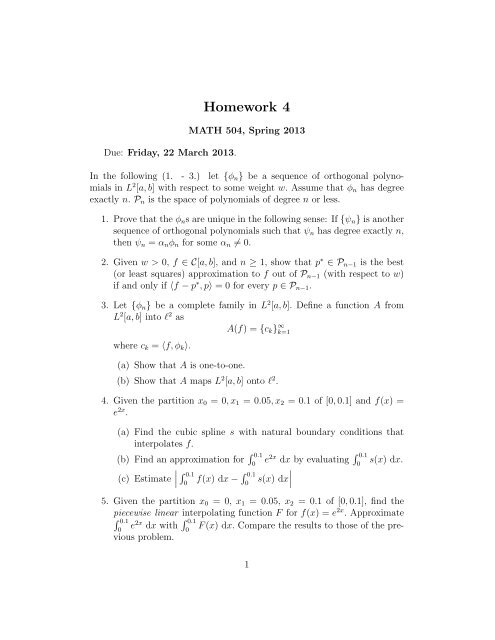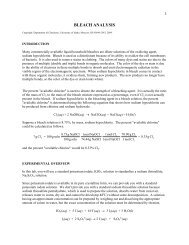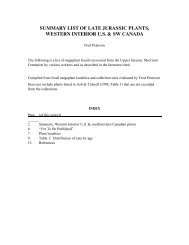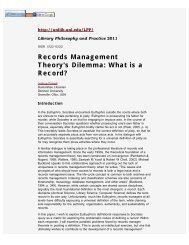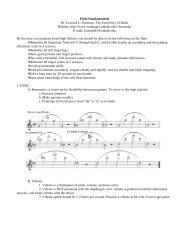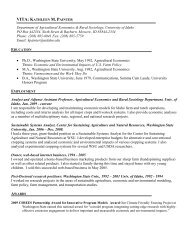Homework 4
Homework 4
Homework 4
Create successful ePaper yourself
Turn your PDF publications into a flip-book with our unique Google optimized e-Paper software.
Due: Friday, 22 March 2013.<br />
<strong>Homework</strong> 4<br />
MATH 504, Spring 2013<br />
In the following (1. - 3.) let {φ n } be a sequence of orthogonal polynomials<br />
in L 2 [a, b] with respect to some weight w. Assume that φ n has degree<br />
exactly n. P n is the space of polynomials of degree n or less.<br />
1. Prove that the φ n s are unique in the following sense: If {ψ n } is another<br />
sequence of orthogonal polynomials such that ψ n has degree exactly n,<br />
then ψ n = α n φ n for some α n ≠ 0.<br />
2. Given w > 0, f ∈ C[a, b], and n ≥ 1, show that p ∗ ∈ P n−1 is the best<br />
(or least squares) approximation to f out of P n−1 (with respect to w)<br />
if and only if 〈f − p ∗ , p〉 = 0 for every p ∈ P n−1 .<br />
3. Let {φ n } be a complete family in L 2 [a, b]. Define a function A from<br />
L 2 [a, b] into l 2 as<br />
A(f) = {c k } ∞ k=1<br />
where c k = 〈f, φ k 〉.<br />
(a) Show that A is one-to-one.<br />
(b) Show that A maps L 2 [a, b] onto l 2 .<br />
4. Given the partition x 0 = 0, x 1 = 0.05, x 2 = 0.1 of [0, 0.1] and f(x) =<br />
e 2x .<br />
(a) Find the cubic spline s with natural boundary conditions that<br />
interpolates f.<br />
(b) Find an approximation for ∫ 0.1<br />
e 2x dx by evaluating ∫ 0.1<br />
s(x) dx.<br />
0 0 (c) Estimate ∣ ∫ 0.1<br />
f(x) dx − ∫ 0.1<br />
s(x) dx<br />
0 0<br />
∣<br />
5. Given the partition x 0 = 0, x 1 = 0.05, x 2 = 0.1 of [0, 0.1], find the<br />
∫<br />
piecewise linear interpolating function F for f(x) = e 2x . Approximate<br />
0.1<br />
e 2x dx with ∫ 0.1<br />
F (x) dx. Compare the results to those of the previous<br />
0 0<br />
problem.<br />
1
6. (Algebraic properties of the Fourier transform) Let f ∈ L 1 (R) and<br />
ˆf = F. Prove the following properties.<br />
(a) ˆF (γ) = f(−γ)<br />
(b) (Translation or time shifting) For any u ∈ R,<br />
̂(τ u f)(γ) = e −u (γ) ˆf(γ)<br />
(c) (Modulation or frequency shifting) For any λ ∈ R,<br />
ê λ f(γ) = ˆf(γ − λ)<br />
(d) (Time dilation) For any λ ∈ R \ {0},<br />
ˆf λ (γ) = λ<br />
|λ| ˆf( γ λ )<br />
7. Show that the Fourier transform of the triangle function f(t) = max(1−<br />
(<br />
|t|, 0) is equal to<br />
sin πγ<br />
πγ<br />
) 2.<br />
2


